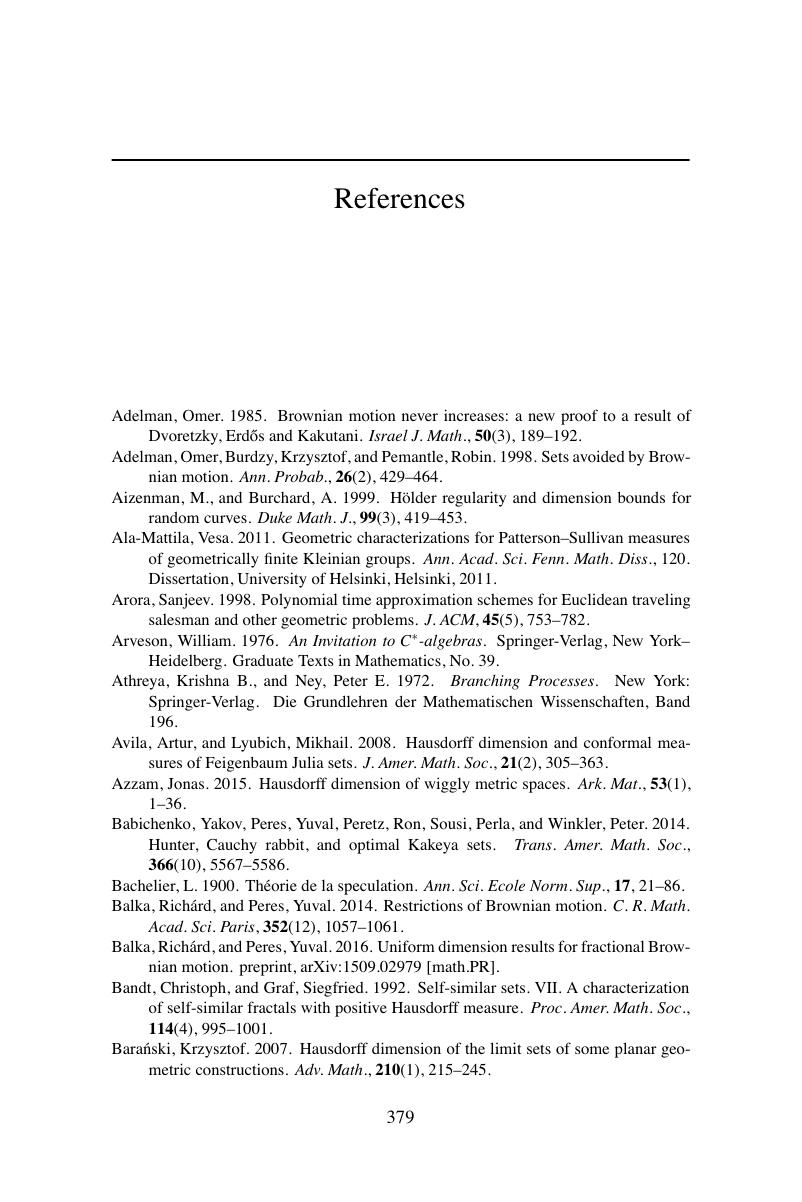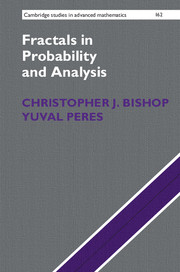Book contents
- Frontmatter
- Contents
- Preface
- 1 Minkowski and Hausdorff dimensions
- 2 Self-similarity and packing dimension
- 3 Frostman's theory and capacity
- 4 Self-affine sets
- 5 Graphs of continuous functions
- 6 Brownian motion, Part I
- 7 Brownian motion, Part II
- 8 Random walks, Markov chains and capacity
- 9 Besicovitch–Kakeya sets
- 10 The Traveling Salesman Theorem
- Appendix A Banach's Fixed-Point Theorem
- Appendix B Frostman's Lemma for analytic sets
- Appendix C Hints and solutions to selected exercises
- References
- Index
- References
References
Published online by Cambridge University Press: 19 January 2017
- Frontmatter
- Contents
- Preface
- 1 Minkowski and Hausdorff dimensions
- 2 Self-similarity and packing dimension
- 3 Frostman's theory and capacity
- 4 Self-affine sets
- 5 Graphs of continuous functions
- 6 Brownian motion, Part I
- 7 Brownian motion, Part II
- 8 Random walks, Markov chains and capacity
- 9 Besicovitch–Kakeya sets
- 10 The Traveling Salesman Theorem
- Appendix A Banach's Fixed-Point Theorem
- Appendix B Frostman's Lemma for analytic sets
- Appendix C Hints and solutions to selected exercises
- References
- Index
- References
Summary

- Type
- Chapter
- Information
- Fractals in Probability and Analysis , pp. 379 - 395Publisher: Cambridge University PressPrint publication year: 2016

